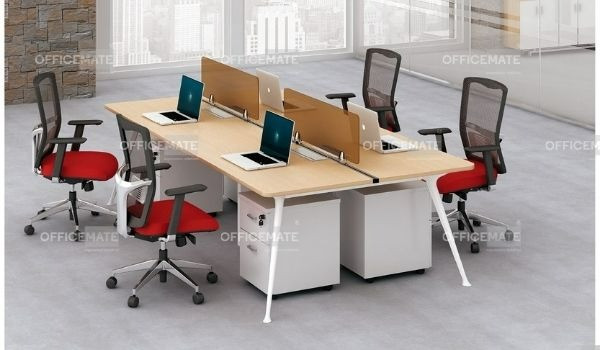30 Free Ways For Deciding On Workspace Management and Moving Solutions
Wiki Article
Ten Tips To Relocate Offices In The Context Of The Comprehensive Service Offering
To ensure an easy office relocation it is essential to plan strategically as well as coordinate and utilize specialists in the field of service. Here are 10 ways to ensure a smooth transition. an extensive service when it comes to office relocation:
1. Consultation and detailed planning
Initial consultations are held to understand the client's needs as well as their budgets, timelines, etc. Create a bespoke relocation plan, which includes a timetable with budget estimates and milestones. An on-site survey is an effective way to pinpoint potential issues that could be a problem, such as access restrictions or equipment requirements.
2. Inventory Space Management Planning
The inventory management services are offered to help you catalog office furniture, equipment, and other things. It will help ensure that all items are packed efficiently and nothing is lost or lost during the relocation. The space planning service will optimize the layout of your new office based on ergonomics, the needs of employees and workflow.
3. Professional Packing and Unpacking Services
Use professional packaging techniques and materials to ensure secure transportation of office assets such as servers, computers and confidential papers. Offer services for unpacking and setting up to ensure that the office is set up quickly and get the office running.
4. IT and Technology Relocation Services
Coordinate the transfer and relocation of IT infrastructure, such as servers, workstations, telecommunication systems, data centres and more. Check that the devices are removed, relocated, and then reconnected properly, to reduce downtime. Provide IT and network services to make the site ready.
5. Furniture disassembly.
It is possible to provide services for disassembling, moving and reconfigure office furniture. This includes desks, chairs and conference tables as well. The security of furniture and employees is assured by proper handling.
6. Comprehensive Moving Insurance and Risk Management
Offer a variety of insurance options to protect against damage and loss. Develop a risk mitigation plan to deal with any possible problems like delays, damages or unexpected expenses.
7. Building Management: Coordination
Coordinating with the building's management in both the old and new location is necessary to handle parking permits, reservations for loading docks and elevator access. Make sure that all building codes and regulations are followed so that delays are not caused or you incur additional costs.
8. Eco-friendly and sustainable practices
Implement sustainable methods such as recycling unwanted items of furniture as well as reducing the amount of packaging waste and selecting eco-friendly products. Provide services for the donation or disposal of old furniture, equipment as well as other things environmentally friendly.
9. Post-Move Assistance and Set-In Services
Support the post-move, including any issues that may occur. Help with settling in, such as the orientation of employees, changes to furniture layouts and IT assistance, so that everyone feels relaxed and productive.
10. Supporting communication and change management
To keep employees informed and informed, offer documents, templates, timelines, etc. to aid the efforts of the client. Change management is an excellent way to improve employee morale.
The final sentence of the article is:
Office relocation services go beyond than just moving furniture from one location to another. The service includes professional handling of preparation, risk assessments, and after-move support to ensure a smooth transition. This will allow relocation companies to provide their clients with a excellent service and a pleasurable experience. View the top moving companies for website examples including relocation singapore, furniture removalists, move movers, local interstate movers, moving company sydney, removals to perth, international movers, movers sydney, moving service melbourne, relocations and more.

Security And Compliance: Ten Tips About Document Management System
Security and compliance is a critical aspect of every document Management System. To safeguard sensitive information and to avoid costly breaches a well-designed DMS must have strong security features and that it is in compliance with regulations and standards like GDPR or HIPAA. Here are ten guidelines to help you maximize security and compliance in your DMS.
1. Implement Role-Based Access Control
Verify that the DMS allows Role-Based Access Control in order to restrict access to sensitive document based on their role and responsibilities. It reduces the chance of unauthorised access, and also ensures only authorized users can view and edit or delete documents.
2. Make use of encryption to protect data at Rest and during transit
Utilize strong encryption techniques for documents, both while they are in the process of transport (being transmitted via a LAN) as well as when they are at rest. This can secure the access of sensitive data even if the information is stolen.
3. You must ensure that you are in compliance with the regulations of your industry.
The DMS must be developed to conform to specific industry regulations, like GDPR or HIPAA. It is important to ensure that the system includes features that are compliant with the regulatory requirements for example, the ability to anonymize data.
4. Keep detailed audit trails, activity logs, and other documents
The DMS should keep precise audit trails, that cover the actions of users, such as document generation, modification, deletion, or access. These records are vital for observing usage, identifying illicit activities, and also ensuring that the DMS is accountable should there be a security breach.
5. Incorporate Multi-Factor Authentication (MFA)
To provide an additional layer of protection, enable Multi-Factor Verification to DMS Access. MFA uses a combination between things the user has (like fingerprints) as well as something they know (like their password).
6. Update and patch regularly DMS
Update the DMS frequently to include the most recent security patches. Regularly updating software helps mitigate vulnerabilities that cybercriminals could exploit, creating a safer environment.
7. Implement Data Loss Prevention measures
Integrate Data Loss Prevention tools to monitor and protect sensitive information inside the DMS. DLP tools can identify and prevent data breaches.
8. Document Retention Policy and Disposal Policy
Set up automated document retention and disposal policies within the DMS to comply with the legal and regulatory requirements. This will ensure that documents are safely disposed within the time frame specified and that they are stored for as long as necessary.
9. Offer Secure Remote Access and Mobile Device Management (MDM)
As remote work is becoming more widespread and more commonplace, it is essential that your DMS is integrated with Mobile Device Management. Secure documents can be accessed on mobile devices via security protocols, like device encryption and remote wipe.
10. Conduct regular security audits and compliance checks
Conduct regular security audits and compliance checks to discover weaknesses and gaps within the DMS. periodic assessments will ensure that the system remains compliant with the ever-changing regulations and is protected against new and emerging threats.
Conclusion
By prioritizing safety and compliance companies can protect sensitive information, maintain integrity of the data, and also avoid financial and legal penalties. A DMS that has robust security features and compliance abilities can provide security and peace of mind, as well as increases confidence among stakeholders and clients. It also creates an environment with a more reliable and secure document management system. Check out the top rated scansionare for site tips including workflow management software, documentmanagement, documentmanagement, document management system, document handling system, records retention, digital document management system, workflow automation, workflow program, document archiving system and more.

10 Tips About International Relocation Companies, Transparency In Costs As Well As Flexibility And Customer Service
When you are evaluating international moving firms, cost transparency, flexibility, customer support and responsiveness are crucial factors that will guarantee a pleasant, easy experience. Here are ten tips to help you assess these factors successfully:
1. Request detailed and itemized quotes
Get a detailed, itemized quote that breaks all the costs down involved with the moving. It should include all costs that include packing, transportation insurance, customs, and other charges. This will prevent unexpected charges, and you'll know exactly the amount you paid.
2. Unanswered Questions About Hidden Costs
SCHEDULE ADDITIONAL COSTS or HIDDEN FEES THAT MAY ARISE DURING THE MOVEMENT. These could include fees for expedited removal services, storage fees and other costs that may be unexpected. This will help you make a plan with precision and avoid unexpected costs.
3. Compare quotes from several firms
Compare costs and services by asking for quotes from different international relocation firms. It is crucial to compare prices in order to identify the business that offers the best service for your needs.
4. Flexible Service Plans:
Look for companies that offer flexible service packages that can be customized to meet your needs. Flexible service providers are able to tailor their services according to your needs.
5. Changes to the policy as well as cancellations
Check out the policy of the company for modifications or cancellations to relocation plans. Flexible companies offer fair alternatives to alter dates, plans or services and provide clear information on any fees.
6. How to Evaluate Customer Support
Contacting the company with questions or to express your concerns, you will be able to assess the level of customer service. Be sure to look for promptness, friendliness, and professional. Excellent customer service is vital to resolve issues quickly and making sure that the relocation process is smooth. process.
7. You must ensure that 24/7 Support is available.
Select a firm that provides 24/7 customer service, particularly in international relocations where multiple time zones are involved. Support is available round the 24/7, which means you will anytime you require assistance.
Review the Support Channels and Communication Methods
Find the different ways to contact support. For instance, you can use live chat, email, or even face-to-face consultations. Multiple communication options provide flexibility and allow you to contact the company for any issues or updates.
9. Transparency in service execution as well as timelines, costs and cost
Make sure that every step of the process of moving is clearly defined and clear. Updates on your move's stage and the estimated delivery date will assist you in managing expectations.
10. Check out the Customer Reviews page on our website to read customer reviews and testimonials
Check out testimonials and feedback from customers to understand the company's reputation in terms of cost transparency, customer service, and flexibility. Past customer experiences can give you valuable insights about the business.
If you're interested in learning more about this topic Click here.
focusing on cost transparency and flexibility, as in addition to customer support can help you select an international relocation firm which has clear pricing and a range of services. Additionally, it will provide an excellent service for your moving process. These factors can help ensure a smooth, efficient, and stress-free relocation. Follow the best commercial movers for blog tips including furniture office furniture, used desk chairs, herman miller chair, desk furniture for office, office tables and chairs, office furniture for sale second hand, second hand office furniture for sale, 2nd hand herman miller chair, used herman miller chairs, store office furniture and more.
